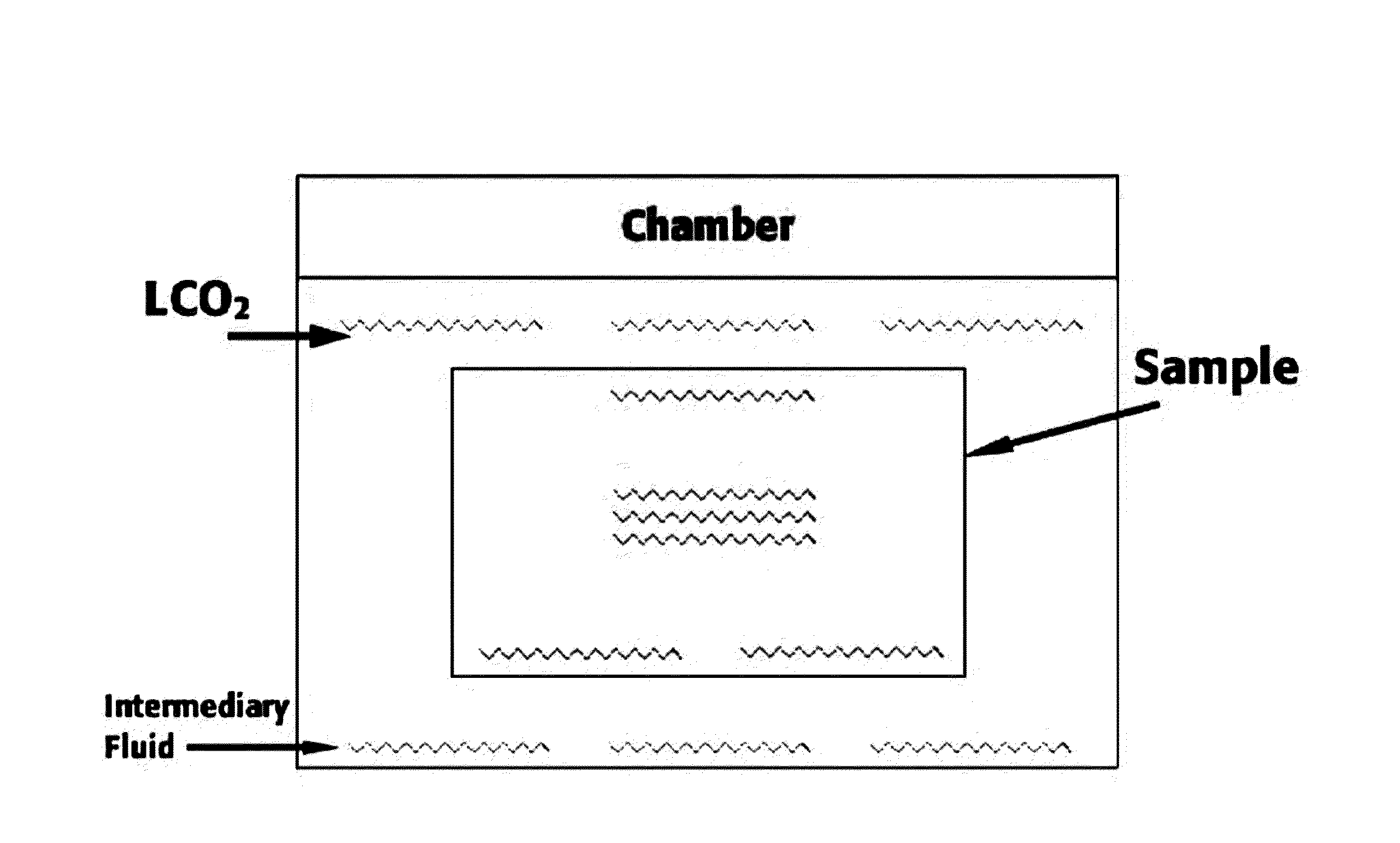Method of supercritical point drying with stasis mode
a drying method and critical point technology, applied in the direction of drying solid materials without heat, lighting and heating apparatus, and preliminary solid treatment, can solve the problems of destroying delicate structures, reducing liquid volume, and conventional drying is inappropriate for use on microelectromechanical systems (mems) devices, biological samples, etc., and achieves the effect of higher success ra
- Summary
- Abstract
- Description
- Claims
- Application Information
AI Technical Summary
Benefits of technology
Problems solved by technology
Method used
Image
Examples
Embodiment Construction
[0034]Reference will now be made in detail to preferred embodiments of the present invention, examples of which are illustrated in the accompanying drawings. Wherever possible, the same reference numbers will be used throughout the drawings to refer to the same or like parts.
[0035]The present invention is a method of supercritical point drying which includes a “stasis mode”, a specialized mode in which a state of inactivity is maintained for more thorough purging of the intermediary fluid from the sample and drying chamber, and ultimately a much higher success rate when drying thicker samples in the dryer.
[0036]The present method may be implemented with a computer-controlled supercritical point drying apparatus as shown and described above with reference to FIGS. 1 and 2. As shown in FIG. 4, the computer system 99 includes a graphical user interface that allows the user to automatically complete the normal operational sequence for drying a sample in a dryer by pressing the Auto icon...
PUM
 Login to View More
Login to View More Abstract
Description
Claims
Application Information
 Login to View More
Login to View More - R&D
- Intellectual Property
- Life Sciences
- Materials
- Tech Scout
- Unparalleled Data Quality
- Higher Quality Content
- 60% Fewer Hallucinations
Browse by: Latest US Patents, China's latest patents, Technical Efficacy Thesaurus, Application Domain, Technology Topic, Popular Technical Reports.
© 2025 PatSnap. All rights reserved.Legal|Privacy policy|Modern Slavery Act Transparency Statement|Sitemap|About US| Contact US: help@patsnap.com



